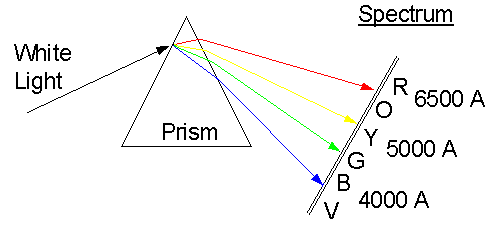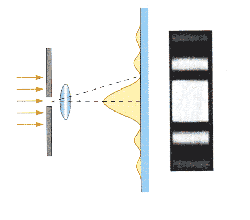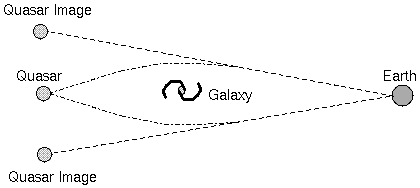We have covered quite a chunk of information in this
Physics portions of the website. All that is left is
to officially introduce light.As we already know,
Sir Isaac Newton discovered light consists of
fundamental colors. Continued work by Sir William
Herschel, Johann Ritter and Michael Faraday
demonstrated the visible light is only a small
portion of a much larger
electro-magnetic spectrum.
Albert Einstein showed us the true nature of light:
- Light is a wave
- Light consists of small particles (quanta)
Thus light is both particle and wave.
Its easy to associate light with just the
fundamental colors of the rainbow,

but this is only a tiny part - 400 nanometers
(blue) to about 700 nanometers (red). Or 4000
angstroms to about 7000 angstroms.
 |
The image on the left demonstrates the
wave nature of light. This effect is called
diffraction, and results when only parts of
the wave can enter the slit. The net effect
is the dark lines visible on the bar to the
left - representing the illumination through
the lens. The wave in the center is brighter
than the others - this is because of the
wave (particles would spread out naturally). |
|
 |
| On the flip side, this image shows a
diagram of what Astronomer's call "lensing."
The
galaxy in the center of the image has a
strong gravity influence causing the light
to bend. This demonstrates the particle
nature of light. |
Because of this, light has both a
frequency and
wavelength:

Additionally, light is the fastest
object in the
Universe - traveling close to 300,000
km/s.
Thanks for your patience through
this (the longest) section of this website!
Back to Top
|

